

How Burgers and Fries Are Killing Your Microbial Balance. For the microbiologist Justin Sonnenburg, that career-defining moment—the discovery that changed the trajectory of his research, inspiring him to study how diet and native microbes shape our risk for disease—came from a village in the African hinterlands.
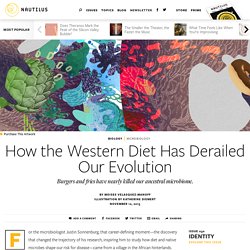
A group of Italian microbiologists had compared the intestinal microbes of young villagers in Burkina Faso with those of children in Florence, Italy. The villagers, who subsisted on a diet of mostly millet and sorghum, harbored far more microbial diversity than the Florentines, who ate a variant of the refined, Western diet. Where the Florentine microbial community was adapted to protein, fats, and simple sugars, the Burkina Faso microbiome was oriented toward degrading the complex plant carbohydrates we call fiber. “It was the most different human microbiota composition we’d ever seen,” Sonnenburg told me.
How the Western Diet Has Derailed Our Evolution. Future - The delicious flavour with a toxic secret. It’s led to raids by law enforcement agencies and mass deaths in animals; in the United States, chefs have ‘dealers’ who smuggle it into the country.
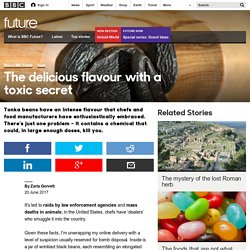
Travel - The New England fish dish that saved a nation. Future - The mystery of the lost Roman herb. Long ago, in the ancient city of Cyrene, there was a herb called silphium.
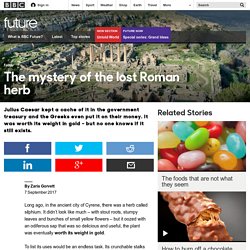
It didn’t look like much – with stout roots, stumpy leaves and bunches of small yellow flowers – but it oozed with an odiferous sap that was so delicious and useful, the plant was eventually worth its weight in gold. To list its uses would be an endless task. Its crunchable stalks were roasted, sauteed or boiled and eaten as a vegetable. Its roots were eaten fresh, dipped in vinegar. Food From Electricity project bears its first protein-rich "fruit" A Finnish research project has created a batch of single-cell protein using just electricity, water, carbon dioxide and microbes, in a small portable lab.
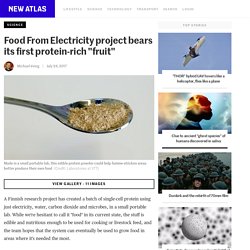
While we're hesitant to call it "food" in its current state, the stuff is edible and nutritious enough to be used for cooking or livestock feed, and the team hopes that the system can eventually be used to grow food in areas where it's needed the most. Agriculture isn't the most efficient of processes, requiring huge swathes of land, plenty of resources and an enormous environmental toll. GMO Algae Offers Unlimited Potential. 1 Shares From a humble green alga, California researchers envision a new world of vegetarian steak, green oil, and non-petroleum-based plastic.
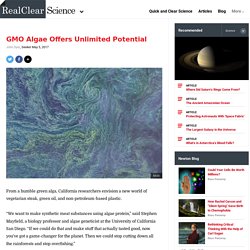
“We want to make synthetic meat substances using algae protein,” said Stephen Mayfield, a biology professor and algae geneticist at the University of California San Diego. “If we could do that and make stuff that actually tasted good, now you've got a game-changer for the planet. Then we could stop cutting down all the rainforests and stop overfishing.”
Read Full Article » Smart indoor garden discreetly grows plants and herbs. One doesn't necessarily need a green thumb and lush plots of land in order to cultivate quality crops.

A Canadian-based team has launched a product aimed at individuals who want to grow plants and herbs year-round without all the guesswork. The Grobo indoor gardening system features smart tech designed to simulate ideal growing conditions while providing real-time information to users. Indoor, automated, and/or smart growing systems are nothing new.
One could take a trip to a local nursery and pick up ready-to-go pods that need only periodic watering and daily sunshine, not unlike the Click and Grow Smart Herb Garden. But vigilance matters – a few missed days of care can impact resulting harvests. Modern Meadow. Potential drought resilience strategies for the Horn of Africa. What Coke Contains — Food for Thought. The Vons grocery store two miles from my home in Los Angeles, California sells 12 cans of Coca-Cola for $6.59 — 54 cents each.
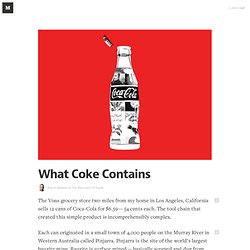
The tool chain that created this simple product is incomprehensibly complex. Turning toxic vegetable refuse into nutritious animal feed. A new technology, known as transport engineering, aims to remove unwanted substances from edible portions of plants.
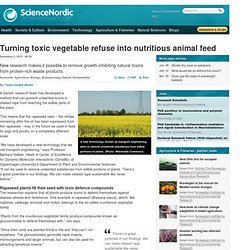
(Photo: Wikimedia Commons) A Danish research team has developed a method that can prevent unwanted toxins in oilseed rape from reaching the edible parts of the plant. This means that the rapeseed cake – the refuse remaining after the oil has been expressed from the rapeseed – may in the future be used in feed for pigs and poultry on a completely different scale. “We have developed a new technology that we call transport engineering,” says Professor Barbara Halkier, Head of Center of Excellence for Dynamic Molecular Interactions (DynaMo) at Copenhagen University’s Department of Plant and Environmental Sciences.
“It can be used to remove unwanted substances from edible portions of plants. Rapeseed plants fill their seed with toxic defence compounds The researcher explains that all plants produce toxins to defend themselves against disease attacks and herbivores. Modern wheat a "perfect, chronic poison," doctor says. (CBS News) Modern wheat is a "perfect, chronic poison," according to Dr.

William Davis, a cardiologist who has published a book all about the world's most popular grain.